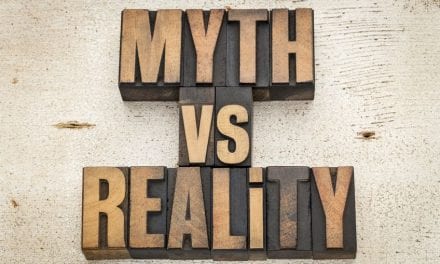What is your cost savings culture?
By Susan Saldibar
“The conversation around ‘Energy Efficiency’ tends to be focused on concepts. Today’s senior care providers have a lot on their priority lists. They need easy, tangible energy measures to meet their goals, not buzzwords.”
That’s the (refreshing) opinion of Steve Weiand, Vice President of Sales and Development for Sodexo’s Energy and Construction Services (Sodexo is a Senior Housing Forum Partner). We sat down with Steve to learn more about what goes into creating an actionable energy efficient program.
He shared some basic steps to make energy efficiency: a) easy to understand, and b) easy to launch. We like Sodexo’s approach. So we’re sharing it with you.
Step One: Understand Where You Are Today.
Take a snapshot of your energy use and costs. It starts with utility bills and ends with culture.
Review your current energy bills:
- How much energy are you using now?
- What are your current rates?
- Are there usage patterns?
Identify areas where you may be overspending:
- Late fees
- Over-charges
- Charges for unused services or equipment
“One of our clients saved about $250k in utility bills alone,” says Steve. “They used the savings to put more energy efficient components without passing the cost along to their residents,” he adds. Up to 40% of utility bills have inaccuracies and overcharges. Reviewing energy bills line by line can reveal opportunities for savings.
Review your internal “culture”:
- How does your community use energy?
- How environmentally conscientious are your residents?
- Is there room for improvement?
- Are they amenable to making changes?
Knowing these things ahead of time will help you determine the rate at which your action plan can roll out.
Step Two: Organize Your Data.
With a full picture of your usage, you can create a strategic plan. “We advise our clients to organize their data into a plan to get maximum results,” Weiand advises.
- Create a list of possible energy saving actions and initiatives – from lighting to HVAC
- Break your actions into short term, midterm, and long term.
- Assign a strategic value for each. In other words, what will you gain from each?
With planning and organization, you can use the savings from initial projects upfront to help pay for future upgrades downstream.
Step Three: Create A Tactical “Action” Plan
Going back to your short-term, mid-term, and long-term items, begin to match them up as follows:
No Cost Actions: These are actions that you can implement right away.
- Recycling
- Composting food
- Turning off lights
- Saving water
Consider putting together an awareness program to encourage residents and staff to “do the basics.”
Quality of Life benefits*: Engaging residents in the process gives them a sense of ownership and pride. It promotes personal growth as well as social interaction.
Minor-Medium Cost Actions:
- Changing filters
- Motion sensors
- Low water flow aerators
- Automated temperature control
- LED lighting retrofits
Quality of Life benefits*: Cleaner air aids health and wellbeing. New technology keeps temperature consistent, which is essential for resident health.
Major Projects:
- Bathroom water sensors
- Water meters
- Variable frequency drives for motors
- Air purifiers
- Energy efficient HVAC systems and appliances
- Structural changes
Quality of Life Benefits*: Enhancing the physical environment promotes ease and efficiency for your staff and residents. Well maintained, working systems improve the resident experience while controlling cost.
It’s More Than Just Money Savings. It’s About Quality Of Life.
The only remaining challenge to starting an energy efficiency program is knowing where to start.
This is why many senior care providers opt to bring in an expert, like Sodexo. Having a strategic advisor who can enact your plan can accelerate savings. Many energy efficiency projects have a return on investment in as little as two years.
“When clients tell us they have saved enough money to make improvements without having to pass the cost along to residents, we know we’ve done our job right,” says Steve.
He adds, “Then, when they share with us that their residents are healthier, have more energy and are actively involved in energy conservation, that makes it all worthwhile.”
*Sodexo has identified “Six Dimensions of Quality of Life.” These are areas where services can have a measurable impact. You can learn more about those six areas HERE.








